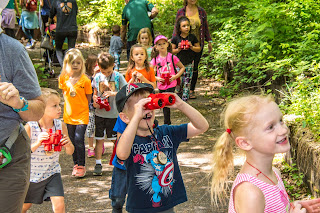Rangifer tarandus
is the scientific name for reindeer or caribou. Some people will use the names
interchangeably, while others will say that the animals found in Alaska, Canada
and Greenland are caribou, and those that live in northern Asia and Europe are
reindeer. And then there are another group of people that say that the name
reindeer refers to the domesticated (raised or tended by humans or Santa’s
elves) herds of northern Scandinavia and Russia and that caribou are the wild
animals in North America. Whatever name you want to use is fine, but what you
need to know is that these are some pretty cool animals, that are designed to
live in some pretty harsh environments.
Reindeer are one of the few large animals that can metabolize and actually survive on lichens. During the warmer months the animals feed on mosses, ferns, mushrooms and other tundra plants, but during the colder winter months, lichens are what is available. Reindeer can eat between 8 and 15 pounds of lichens a day, but since lichen have no proteins the reindeer will still lose weight.
Rudolph may have the only known nose that actually glows
red, but reindeer have some serious cold weather noses. They are the only
member of the Cervidae family that has hair completely covering the nose. That
seems to come in very handy when pushing snow aside to get to the lichens.
Reindeer also have increased number of blood vessels in the nose that helps to
circulate warm blood through the nose and heat up the arctic air that they are
breathing in.
Living in habitat that has such extreme differences in day
length and available light, the caribou or reindeer have eyes that change with
the season. The tapetum is a reflective membrane (which is what causes “eye
shine” in many animals) located behind the iris that changes from golden in the
summer to blue in the winter. When the tapetum changes color it reflects
different wavelengths of light. In the summer when there is 24 hours of light
the golden color pushes most of the light back out of the eye. In the
never-ending darkness of winter, the dark blue scatters the light inside the
eye where it has a better chance of being absorbed by the light sensitive cells
within the eye. Reindeer or caribou are also one of the few large mammals that
have ultraviolet (UV) vision. This ability helps the animals as their snow/ ice
covered habitat reflects UV light, while predators, urine and lichen all absorb
UV light and would strongly stand out against the reflective ground.
Caribou are social animals living in herds from ten individuals to fifty-thousand, during migration these herds can join other herds to form what is known as a super-herd that can reach numbers of 500,000 animals.
Not all caribou migrate, but those that do can travel some pretty impressive distances. They are considered to have the longest migration of any land mammal traveling up to 3000 miles in a year. Please note that this is not a straight line measurement but includes all travel in a given year; the distance to and from summer to wintering grounds and the wandering they do enroute.
Whether you will be looking for Santa’s reindeer or not, I
think most people would agree caribou (or reindeer) are pretty awesome
critters.






















































